Following the Paleo diet and despite an increased interest in vegan foods, a low-carb diet seems to be all the rage right now: “the Keto Diet” – a ketogenic diet (aimed at limiting carbohydrates to achieve a state of ketosis, and cause the body to use fat instead of sugar for energy). This diet is similar to the Atkins Diet “detox” stage, which was made popular due to rapid weight loss experienced by dieters – but then declined as side effects and boredom began to crawl back into consumer lives, along with an array of lowcarb options that inhibited the weight loss.
This is what the Keto Diet trend looks like in Google Trends. Note that we’ve analysed various alternative terms for each diet, including the related and rising searches, to make sure we get this right.
US – 2004 to present. Note the steep rise of the yellow line, compensating for loss of interest in Paleo. Also note the gradual rise in interest in low-carb, definitely not yet at 2001 – 2004 levels.
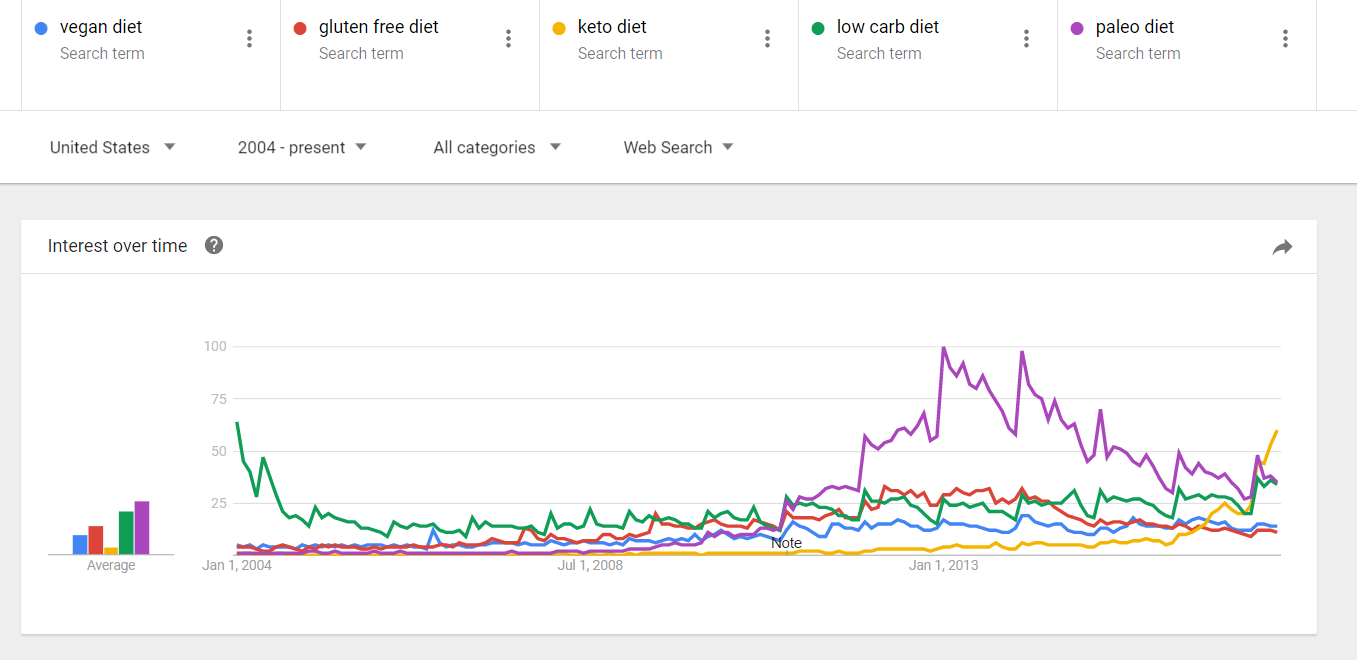
Being the hot trend that it is, we can see it more clearly looking at the latest 12 months period. This also enables us to see correlating trends such as interest in Paleo being similar to searches for Low Carb Diet, or similarity between gluten-free and vegan diet searches.
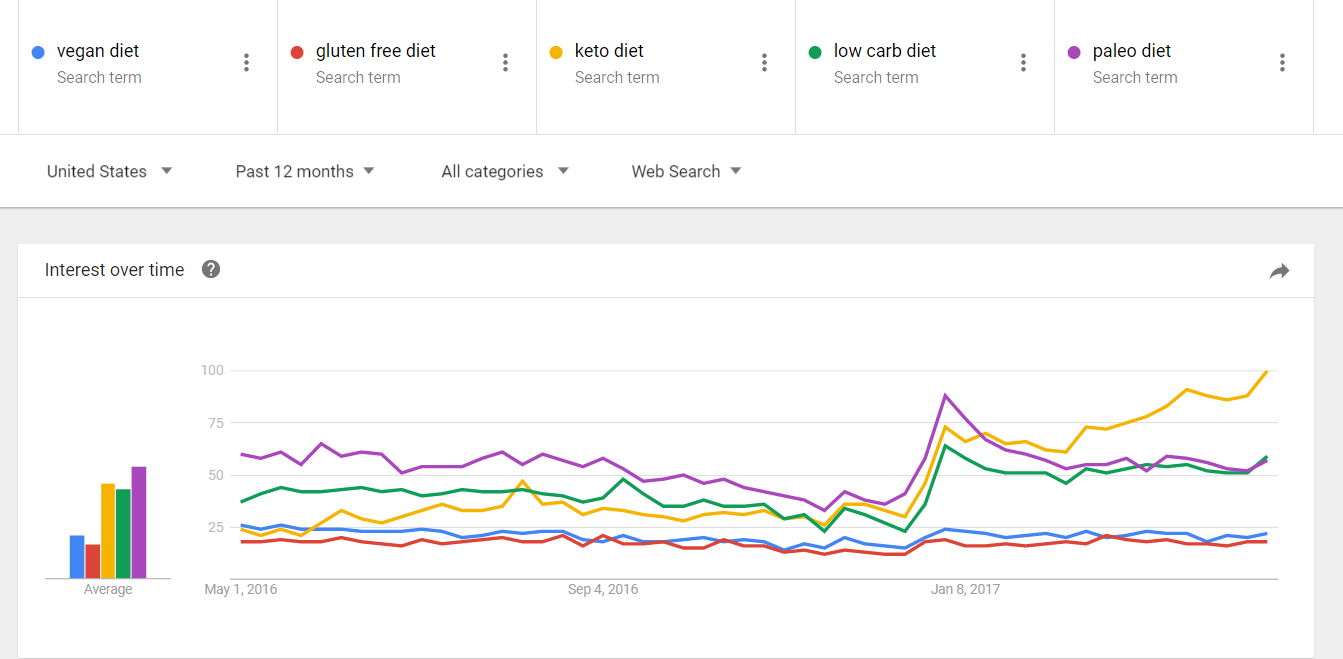
In the UK, the trend is more moderate; but you can also see the rising interest in low-carb and the “keto diet”.
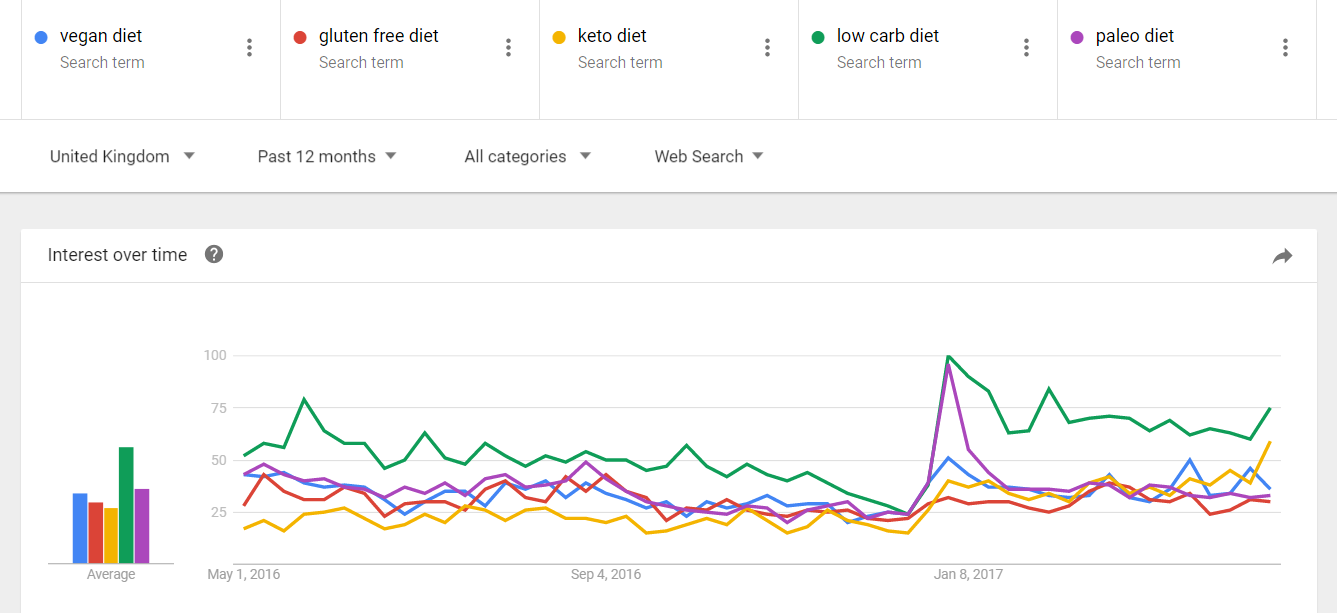
Due to the gradual trend in the UK, it is in this case more evident when displaying search trends for 2004 – present:
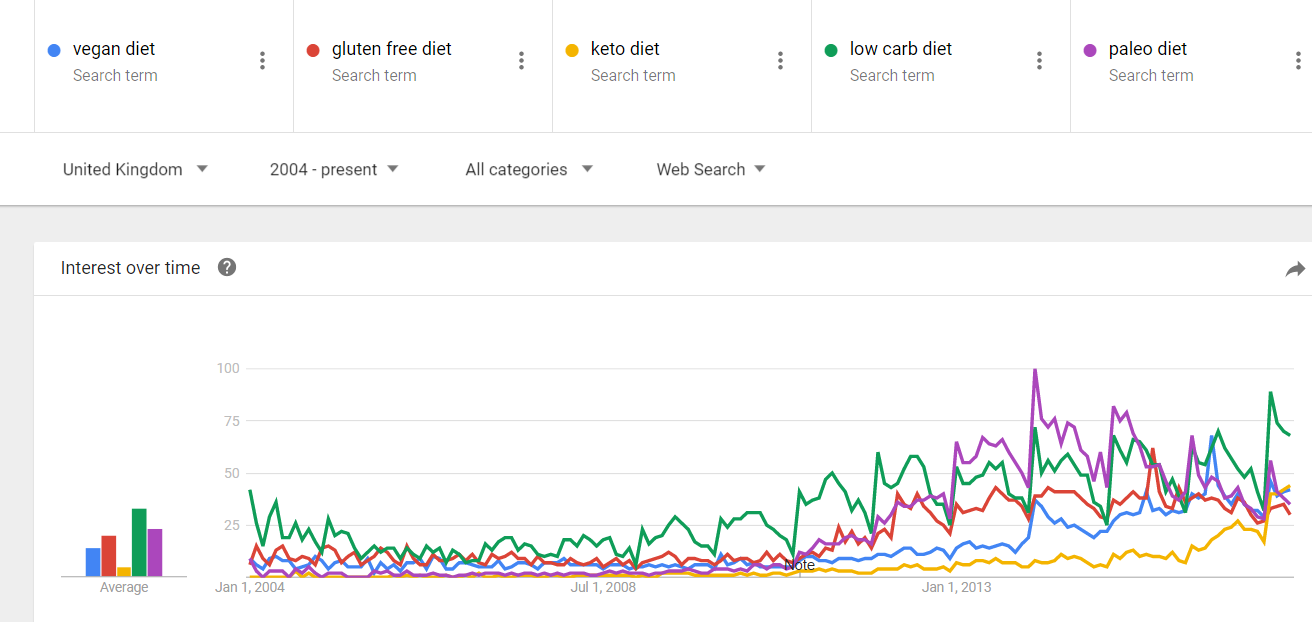
The questions people ask are usually “what is the X diet”, but also look for “diet plan” or “best X diet”, indicating they mean business, and not just expressing general interest.
We believe that this will not be the reincarnation of the bacon and butter binge of the early 2000’s – consumers are much more sophisticated and informed today, and they will look for lower carbs, protein rich foods, but also vegetable based and healthy fats-based protein. We also believe that the “keto diet” will turn out to be a fad, as described hereinafter.
So, what are brands to do in the meantime?
First of all, cutting on sugar is generally a good idea as it is in line with consumers’ awareness to sugar. If you can emphasize protein and healthier fats – please do so.
Focus on populations that will keep searching for carbs (of a better sort, though), such as younger and older populations rather than 20 – 45 years old consumers, as ketones are unhealthy for many consumers.
Refrain from using artificial sweeteners – indeed, Splenda got it right in the Atkins days, but consumers are more reluctant to use artificial sweeteners today.
Fiber is key. Limiting “net carbs” in low carbs diet (being a inhibitor of blood sugar), fiber should be emphasized in products and marketing.
We are firm believers in Gut Health and Personalization (Microbiome based diets) being the number one long-term health trend. Fiber and fermentation are two strong properties that can be emphasized to contradict the negative perception of carbohydrates, and ultimately, the gut health awareness will turn the low-carb conversation to irrelevant (the return of “which carbs”).
Here is how this steady trend looks in the USA (related searches concern the microbiome, healthy gut and problems such as “leaky gut” which are also diet related):
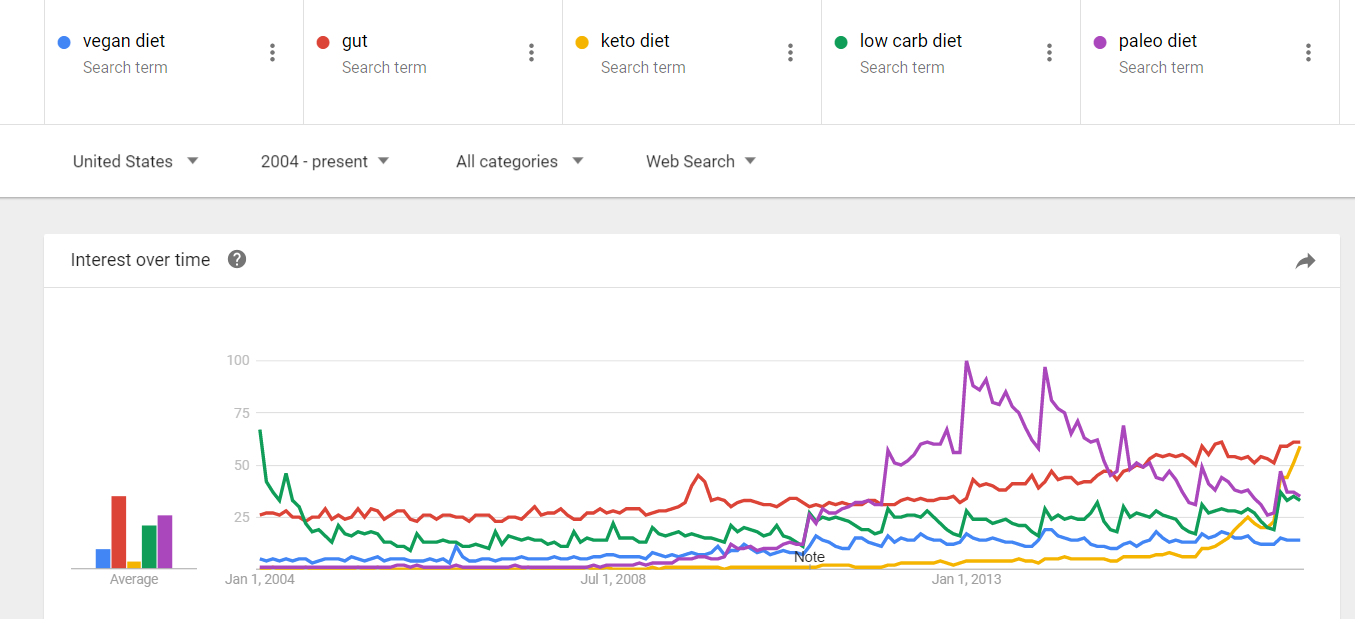
We are writing a report about the Gut Health Trend and other Health and Wellness Trends. To receive the Table of Contents and apply for Early Bird Discount, Click Here.

